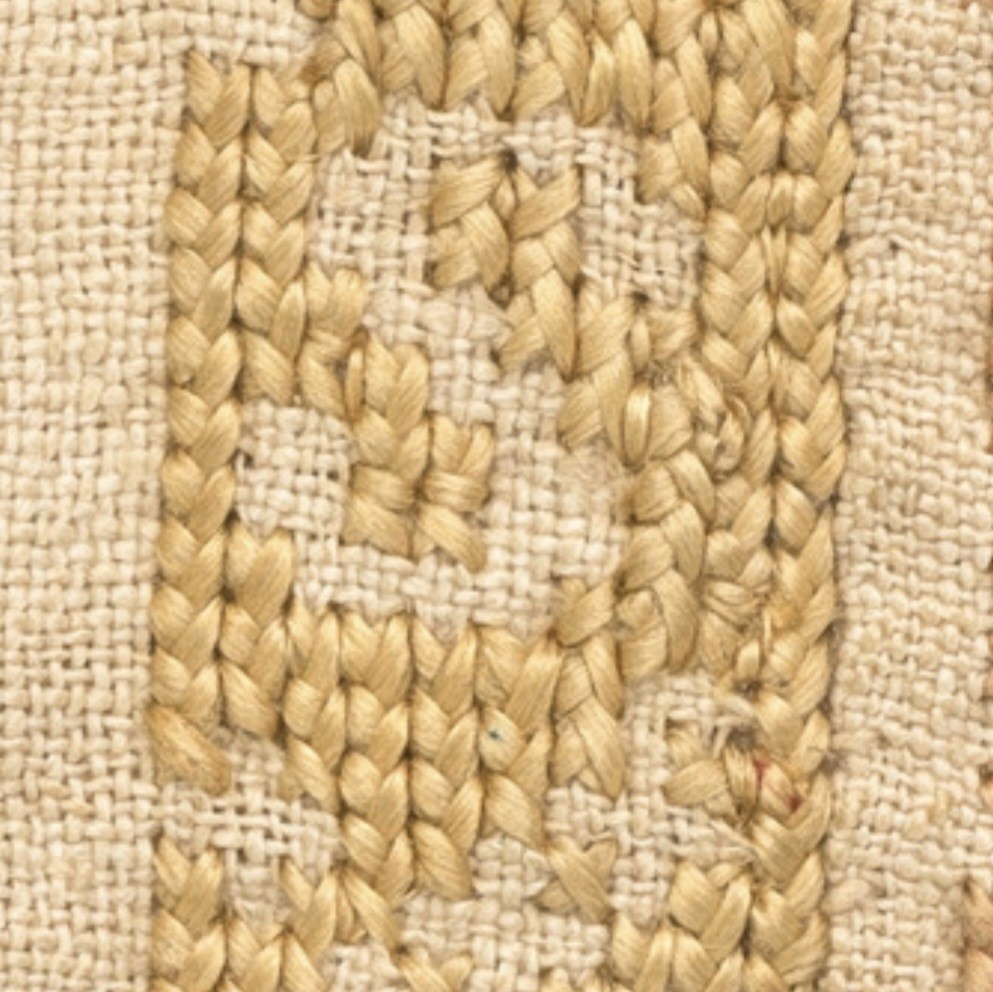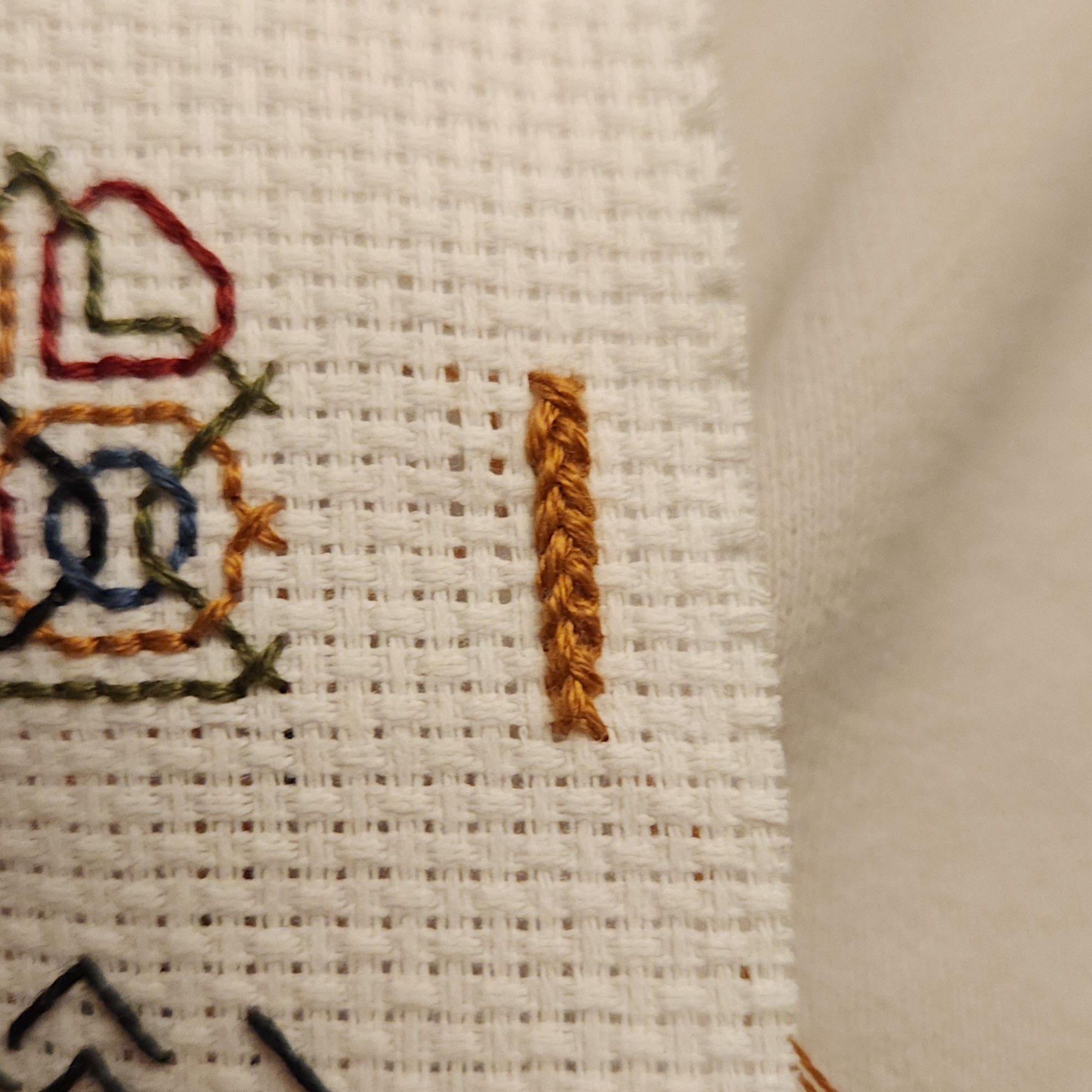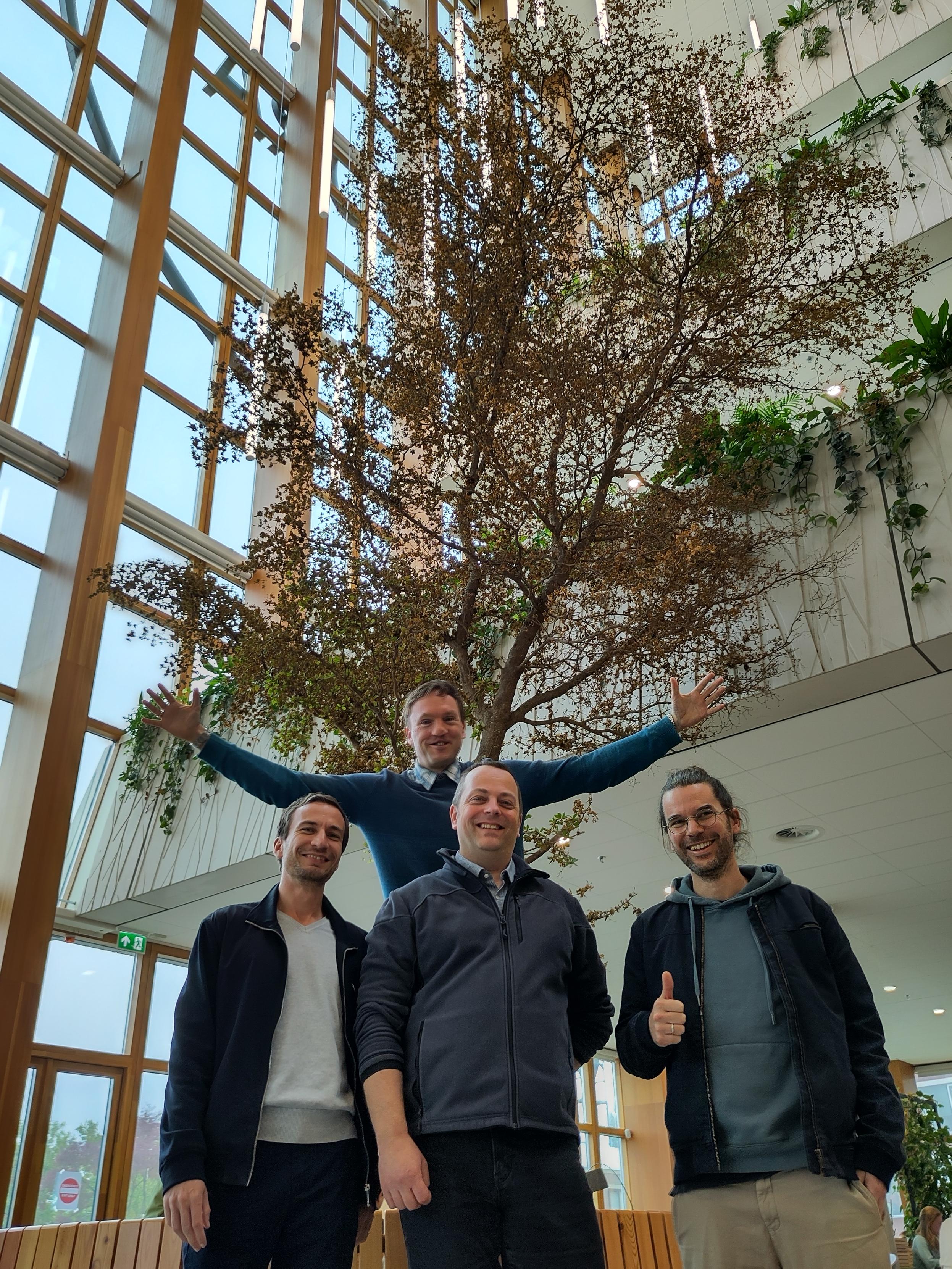⁂ Article
Sellos para celebrar la cultura libre
Hace unos años creé cinco iconos acumulativos que indican cómo, a diversos niveles, se aplica la cultura libre en una obra de nuestra creación. Los he subido a Komunikilo y los he licenciado bajo dominio público. Espero que os gusten y los queráis usar para celebrar la creación de cultura libre.
Modalidades
El primer icono contempla lo básico: software y licencia. El segundo, incluye la difusión en el Fediverso. El tercero, suma el acceso a la obra. El cuarto, incluye la facilitación del código fuente. Y, por último, el quinto indica que, además de todo lo anterior, la obra se ha materializado también bajo parámetros de cultura libre. Es decir, que en la impresión de la obra también se ha usado software libre.

Como, al parecer, WriteFreely no muestra las descripciones de imagen, ahí va la de esta: cinco sellos acumulativos con rayas horizontales y verticales que se van van cruzando dentro de un círculo. A más rallas, más libre es la obra.
Más información sobre los sellos
Usos
hiper/ediciones es una pequeña editorial lanzada este mes de setiembre por Hamed Toledo (@hamedtoledo@social.anartist.org). Y ha sido el primer proyecto en usar uno de los sellos. En su colofón se detalla:
hiper/ediciones publica bajo el Sello de Cultura Libre en la modalidad de creación, licencia, difusión, acceso y modificación. Por una cultura libre.
Destacar que la web del proyecto es una gran alegría para la web pequeña: está hiper/limpia y es hiper/ecolobits. Mi enhorabuena y mis mejores deseos para este precioso proyecto de cultura libre.
Licencia de esta publicación
Sellos para celebrar la cultura libre 2025 por komunikilo.org bajo Licencia Art Libre LAL 1.3.
Redacción: @titi@bcn.fedi.cat
Also while I'm not all that interested in replicating cross stitch designs... This particular cross stitch in the Portuguese booklet is interesting. It isn't standard crosses as far as I can tell, more of a plait/braid. Some sort of long-armed cross stitch? Maybe Greek stitch?
Greek stitch seems pretty close? I quite like the braided look~


Yesterday I was singing the praises of #Jellyfin with someone in my life and they went: "Sounds great. It's a pity it cannot be connected to Google Drive or iCloud".
Fedi friends, this sentence sent actual shivers down my spine. I have no poker face and I may have even blurted out "ew why?" Then I said: "you know that the cloud is basically someone else's computer, right?"
So yes, I'm a certified Fediverse person now (in case there were any doubts).
And I just installed Jellyfin YAY 🥳
@_elena Welcome, switched to Jellyfin from Plex when they started sending "fun" mails of what people were watching on plex to their contacts. Making it very obvious that they track whatever you watch. Jellyfin is great, hope you enjoy it as much as I have. :)
@dave @ErickaSimone @hko That’s not what’s happening at Blacksky.
The issue is that Blacksky has imported some of Bluesky’s moderation labeling into their it’s own system, which indicates there’s still some decoupling work that needs to take place, as Blacksky has its own system.
And in terms of whole platform moderation, that’s not true.
#thebadspace proves anyone can have their own decentralized moderation based on whatever parameters they want, so that’s not the issue.
The issue is that many platforms don’t want *any* moderation at all.
So it’s not a convo about nuance. It’s a convo about extremes.
Reporting to you live from War Ravaged Portland
Does anyone know if any of the surveillance tech used by feds can impact digital cameras in any way? Two photographers complained about weirdness otg today and having to take batteries in and out to work. Both relatively new cameras with Wi-Fi and Bluetooth compatibility fwiw. Could definitely just be a coincidence idk but they both said they’ve never encountered those issues before
Update: Members of the Unpresidented Brass Band were bull rushed and brutalized as they were in the middle of playing "Ghostbusters." One was sent to the hospital and had to get stitches after having their lip busted open by federal agents, another maced in the face, and another tackled and arrested and taken across state lines where they are still being detained.
Read more about Sunday's protest in Portland here
Members of the Unpresidented Brass Band were bull rushed and brutalized as they were in the middle of playing “Ghostbusters.” One was sent to the hospital and had to get stitches after having their lip busted open by federal agents, another maced in the face, and another tackled and arrested and taken across state lines where they are still being detained.
Read more about Sunday’s protest in Portland here:
https://www.wewillfreeus.org/naked-bikers-and-federal-escalation/
Nouvel élément ! : 14-10-2025 21:30
https://www.aljazeera.com/news/liveblog/2025/10/14/live-trump-signs-gaza-ceasefire-deal-with-leaders-of-qatar-egypt-turkiye
"En informant officiellement les Nations unies qu'il limitera l'aide humanitaire à #Gaza afin de faire pression sur le Hamas pour qu'il localise et libère les corps des otages tués, Israël admet ouvertement utiliser l'aide humanitaire comme une arme de guerre, ce qui été jusqu'à maintenant nié.
Le Premier ministre Benjamin Netanyahu et son ancien ministre de la Défense Yoav Gallant font l'objet de poursuites pour crimes de guerre devant la Cour pénale internationale, notamment pour avoir utilisé la famine comme arme de guerre.
...
Mais depuis deux ans, Israël diffuse des mensonges pour nier ces accusations, notamment en affirmant sans preuves que le Hamas vole l'aide humanitaire et en avançant l'argument infondé que les agences des Nations unies ne parviennent pas à la distribuer.
La notification adressée aujourd'hui à l'ONU semble être un aveu de l'utilisation de l'aide humanitaire à des fins militaires et politiques.
« C'est très important, car il s'agit d'une lettre envoyée aux Nations unies, qui indique très clairement par écrit qu'ils vont limiter le montant de l'aide », a rapporté Gabriel Elizondo, journaliste à Al Jazeera."
Pour terminer, on peux donc dire que cette entité, crée par israel et soutenu par les états unis, était le dernier maillon de cette entreprise d'affamement et de nettoyage ethnique du peuple palestinien.
Nouvel élément ! : 14-10-2025 21:30
https://www.aljazeera.com/news/liveblog/2025/10/14/live-trump-signs-gaza-ceasefire-deal-with-leaders-of-qatar-egypt-turkiye
"En informant officiellement les Nations unies qu'il limitera l'aide humanitaire à #Gaza afin de faire pression sur le Hamas pour qu'il localise et libère les corps des otages tués, Israël admet ouvertement utiliser l'aide humanitaire comme une arme de guerre, ce qui été jusqu'à maintenant nié.
Le Premier ministre Benjamin Netanyahu et son ancien ministre de la Défense Yoav Gallant font l'objet de poursuites pour crimes de guerre devant la Cour pénale internationale, notamment pour avoir utilisé la famine comme arme de guerre.
...
A sam a pust....
WELP, HERE WE GO AGAIN.
(Translated from French)
Faced with repeated violations of the Constitution, Col. Michael Randrianarina of CAPSAT announced from the State Palace in Ambohitsorohitra the suspension of the Constitution of 11 December 2010, and the establishment of transitional structures for national renewal.
The Senate, the High Constitutional Court, the Independent Electoral Commission, the High Court of Justice, and the High Council for the Defense of Democracy are suspended, while the National Assembly remains in operation.
(cont. →)
(→ cont.)
This initiative is presented as a response to the aspirations of the Malagasy people, aimed at restoring democracy, rebuilding trust in institutions, and establishing fair, transparent, and accountable governance.
This period, limited to a maximum of two years, will be led by a Joint Committee (‘Fiadidianana iombonana ho an'ny fanavaozana’) exercising presidential prerogatives, a government, the National Assembly in its current form, and the judicial system, including a High Court for Renewal.
A constitutional referendum and elections to establish new institutions will close this period.
The National Assembly just voted to impeach President Rajoelina, 130 to 0.
BUT
Rajoelina tried to stem the vote by dissolving the Assembly.
So now the question is which move is considered valid.
WELP, HERE WE GO AGAIN.
(Translated from French)
Faced with repeated violations of the Constitution, Col. Michael Randrianarina of CAPSAT announced from the State Palace in Ambohitsorohitra the suspension of the Constitution of 11 December 2010, and the establishment of transitional structures for national renewal.
The Senate, the High Constitutional Court, the Independent Electoral Commission, the High Court of Justice, and the High Council for the Defense of Democracy are suspended, while the National Assembly remains in operation.
(cont. →)
people seem pretty happy with GtS v0.20.0 so far, which is nice to see :)
we've got a few bug reports for small things, which we'll probably fix in a bugfix release in a week or two, but aside from that it seems quite alright!
"Trabalho como DevOps enginner. Vou levantar minha própria instância e rodar em podman. Não tem como dar errado. Confia."
A instância...
Rajoelina’s speech has been delayed several times, first due to the presidential office’s claims that armed military groups were trying to take control of public media studios, then without any further explanation. It was supposed to happen over two hours and a half ago.
Meanwhile, French president Emmanuel Macron was asked by French media about the whole “French plane exfiltrates Malagasy president” thing. Instead of admitting anything, the bastard decided to emphasize the importance of avoiding any foreign meddling in Madagascar’s local affairs”.
The National Assembly just voted to impeach President Rajoelina, 130 to 0.
BUT
Rajoelina tried to stem the vote by dissolving the Assembly.
So now the question is which move is considered valid.
"Getting a DOI on personal blog posts is technically challenging, but possible using services such as The Rogue Scholar (https://docs.rogue-scholar.org/)." https://doi.org/10.1007/s44186-024-00287-w
Three #LOTUS project members and a photobomb
[ #VeilleESR #BienvenuEnFrance ] Ce communiqué du programme PAUSE témoigne d'un déshonneur pour la France, et invite à se rappeler des déclarations présidentielles regardant les scientifiques menacés aux USA.
Jouer ainsi de communication avec des vies humaines est inacceptable.
@sebsauvage Visiblement à la vue de ton message avec une grosse poitrine, on a tous fait la même chose. Le site https://japanization.org/ est ddos 😂
@EVOTk
ah mince 😅
Open Science
We are a network of scientists, developers and organizations building the next generation of digital spaces for open science.












